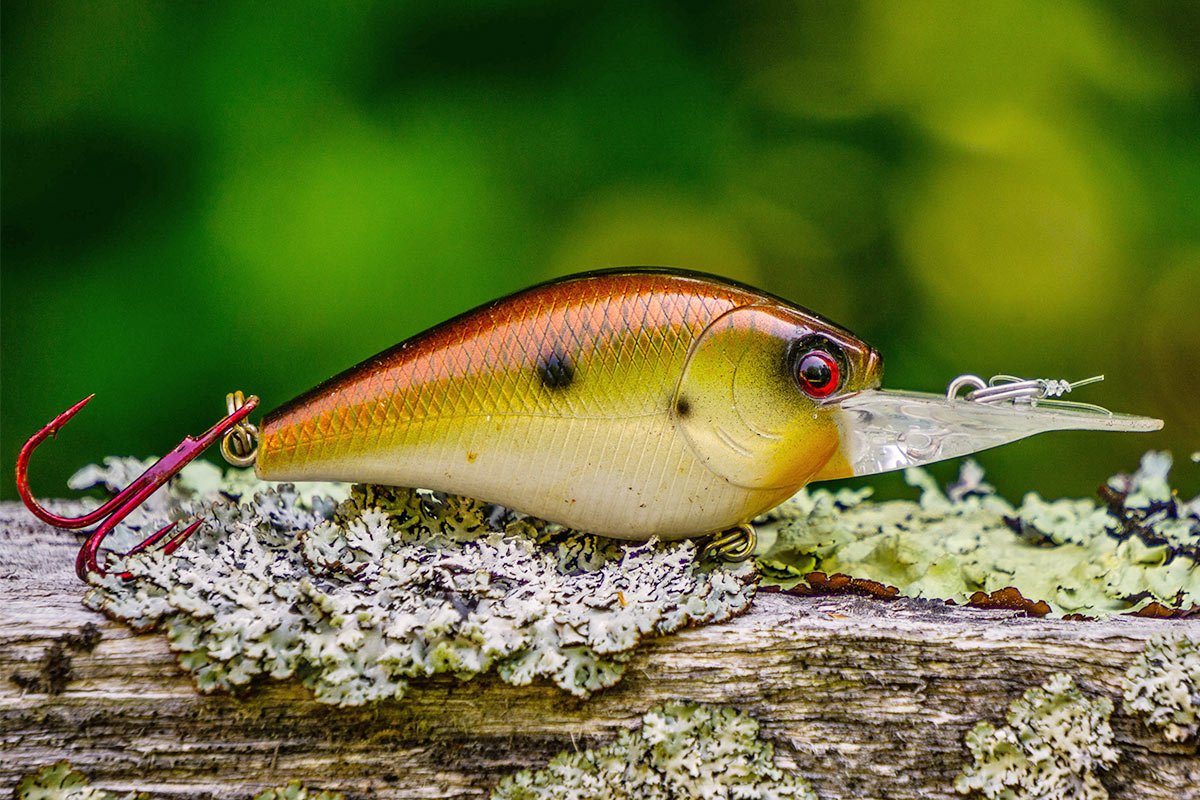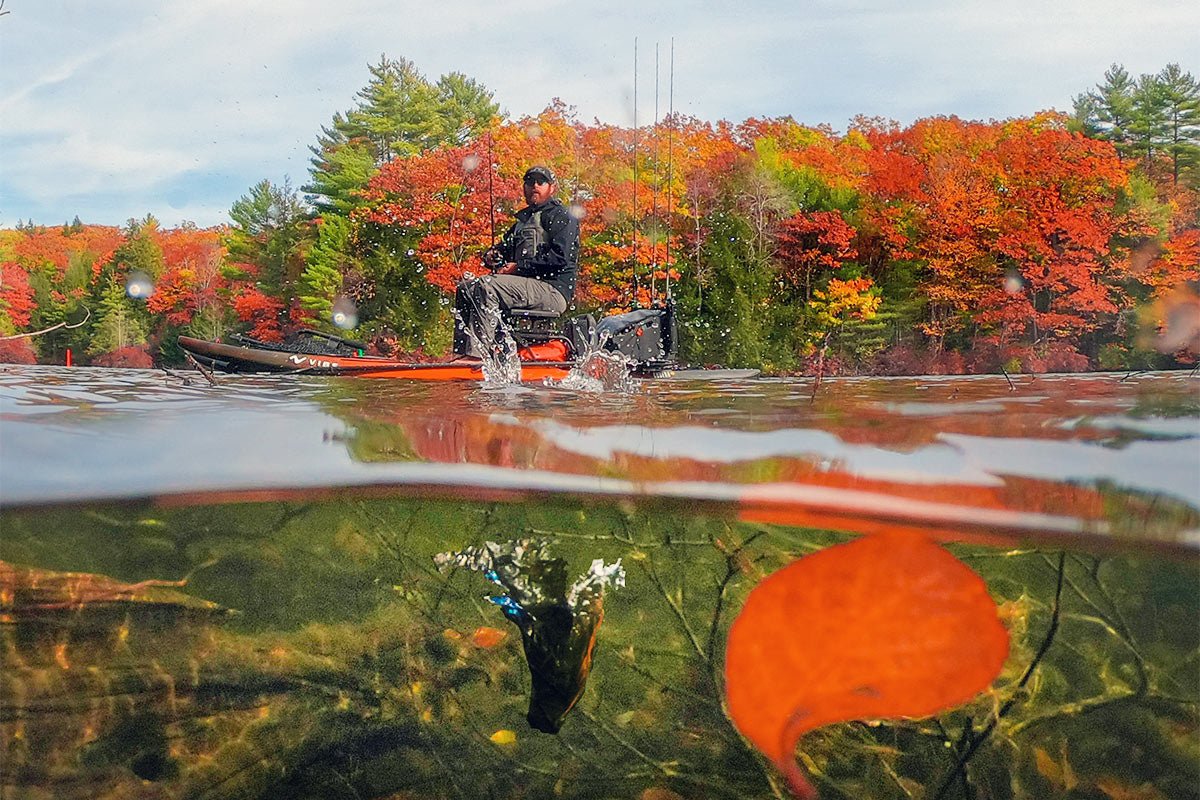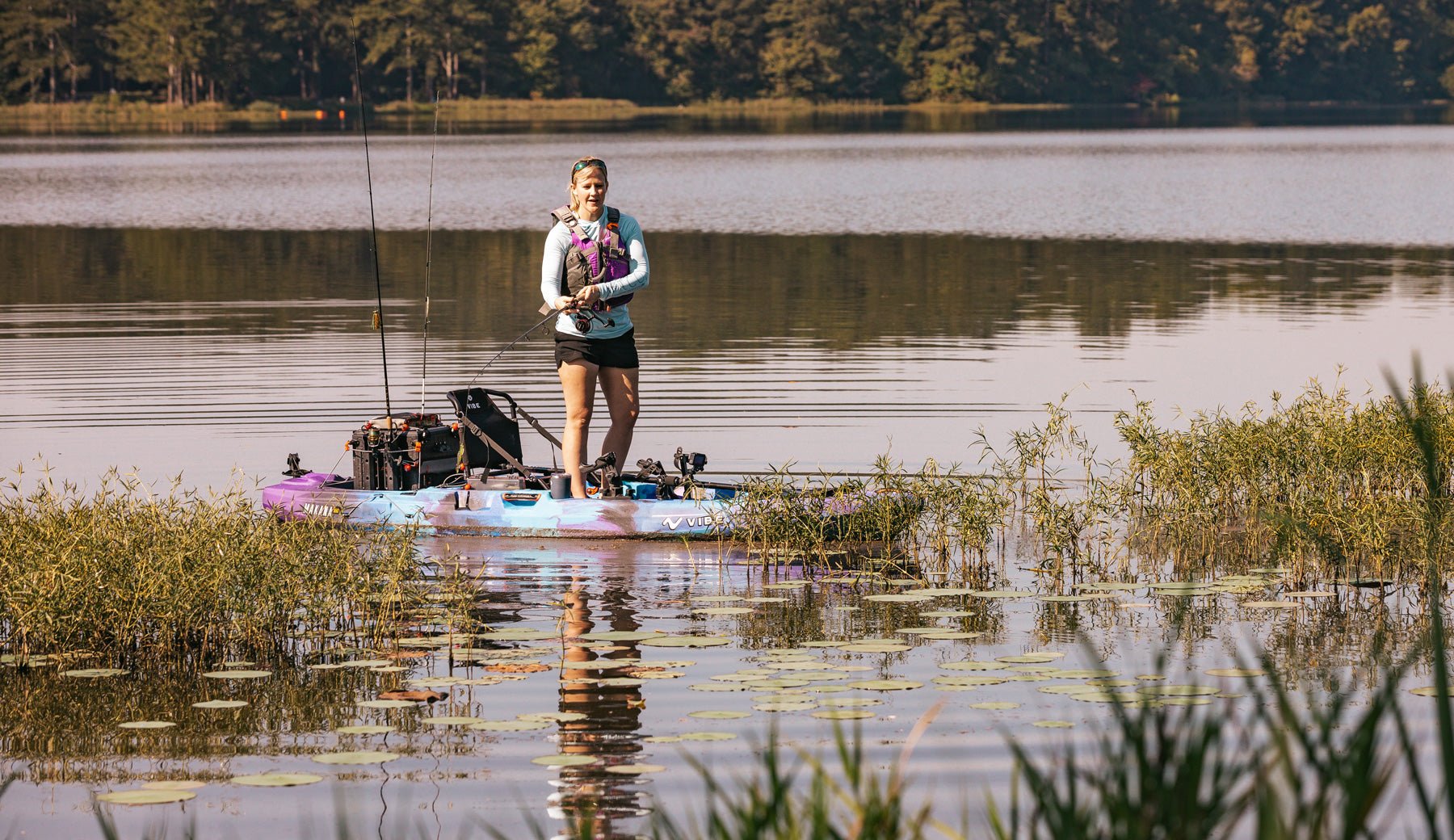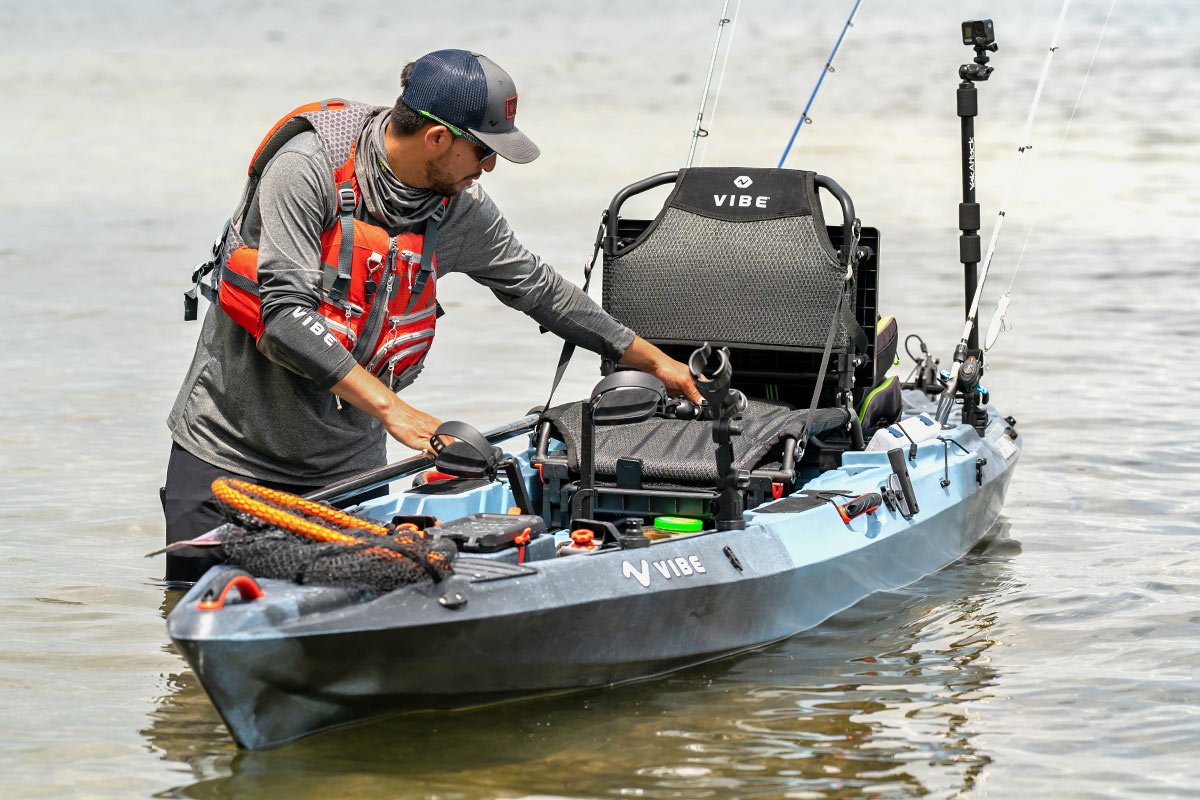How to Use Crank Baits to Catch Bass

Bass live in, and love, grass. Knowing how to kayak fish and catch in grass – while keeping your expensive lures from disappearing – is the difference between lots of super fun hookups and pure frustration.
Think about this for a second - most moving baits, chatterbaits and swimbaits to name just a few, sink on the pause, which can be detrimental in the grass. On the other hand, most CRANKBAITS float on the pause – allowing them to clear weeds and stay squarely in the bass strike zone.
2 Key Things To Getting To The Bass In Grass
There are two key things to focus on first while kayak fishing around grass and weeds: (1) the ability to quietly move near them without spooking the fish, and (2) then the ability to stay in position while you throw your bait.
The first can be solved by having a stealthy, maneuverable fishing kayak such as either the 11-foot Sea Ghost 110 or the 12-foot Yellowfin 120 or the 12-foot SUP hybrid Cubera 120, as any of these will get you right where the fish are hiding. And if you have a Sea Ghost or Yellowfin already, then adding inexpensive new deck padding will really improve your ability to stay quiet.
The second problem of staying in position can be solved through a number of means. First, if you have a Sea Ghost that has a rudder or a Yellowfin fitted with a rudder, then it makes on-water positioning easier. If you have an anchor or an anchor-pole then this will help keep your fishing kayak in place while you throw line.
3 Killer Crank Bait Tips
Here are some killer crank bait tips for using crankbaits to cover water and locate bass on grass lakes while kayak fishing.
Use Crankbaits As A Search Bait On Grassy Lakes And Ponds.
Many lakes and ponds have heavy weed growth throughout shallow and mid-depth areas. There's suitable bass habitat pretty much everywhere in this scenario, so bass commonly spread out during the summer months. A moving bait is the most efficient way to locate fish. A crankbait is preferred over other moving baits for its ability to be fished fast and its sheer fish-triggering qualities. Also, unlike sinking lures, crankbaits stay up in the water column where active bass often feed.
Choose A Buoyant Crankbait Made Of Balsa Wood
Buoyancy matters a lot here - your primary goal is to select a bait and line combo that allows you to tick the top of the weeds. "Fowling" will totally happen, but it happens a lot less with a highly buoyant bait. Balsa crankbaits are usually a faster float than comparable plastic varieties.
Just like when you contact wood or rock, make sure to vary your retrieve, mainly when your bait contacts grass. Doing so allows the bait to float up and clear the weeds (reduces fowling) while implementing a speed and direction change - both are key triggers to bass.
Make Shorter Casts
Short casts go against conventional crankbait fishing wisdom, but it passes the commonsense test when it comes to fishing in grass. You're going to fowl when fishing grass – that's just the way it is – but if you're doing long casts you'll end up blowing a lot of casts by snagging weeds at the end of a long cast.
Similarly, hook a bass with a trebled bait and lighter fluorocarbon line at the end of a cast, and you'll struggle to maintain the fish up and out of the weeds. Instead, make more short to mid-range casts. You'll have way better depth control of the bait through rod angle manipulation, and fowl much less. When it comes to grass, short casts are better.
Crankbaits can be one of your "secret weapons" while out hunting for bass hiding out in grass and weeds, so get out there and practice playing with them using these tips and it'll ensure more often hook ups with less lost lures and frustration. Happy hunting!



